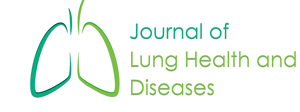Commentary on "Effect of Humidified Noninvasive Ventilation on the Development of Facial Skin Breakdown"
Jaber Saud Alqahtani1, 2*
1Respiratory Care Department, Prince Sultan Military College of Health Sciences – Dhahran, Saudi Arabia
2Respiratory Medicine, University College London, London, United Kingdom
Over the past two decades, evidence has mounted linking noninvasive ventilation (NIV) failure to failure to understand the optimal NIV technique necessary to control respiratory failure which includes both the choice of NIV modality and the skills required to use it1,2. Nevertheless, NIV use is associated with device-related development of facial pressure injuries, which is a serious side effect specifically related to the interface3. Our recent article has pointed out a very interesting result about the potential role of humidification in the development of such pressure injuries4. According to this recent investigation, the use of humidification with NIV significantly increased transepidermal water loss (TEWL) and skin humidity compared with non-humidified NIV4. Such a moisture increases effects of friction of the skin and makes it more susceptible to damage. This pointed out the importance of having prophylactic strategies to maintain adequate skin microclimate with appropriate NIV settings to safeguard skin integrity as wetter skin is at greater risk of maceration and friction injury5. This combined approach, involving both awareness of all-cause risk factors of pressure ulcers and Medical device-related pressure ulcers (MDRPUs) prevention protocols would improve the quality of care and eventually patient’s outcomes.
According to a recent report, around 33% of all hospital-acquired pressure ulcers are related to medical devices and that those employing devices were 2.4 times more likely to have a pressure ulcer of any kind6. In recent years, NIV interfaces have been recognized as potential causes of MDRPUs. A recent systematic review has recommended developing a prevention protocol for NIV interfaces related to pressure ulcers in order to improve NIV compliance and success7. Authors of this review have proposed an algorithm for how health care providers should approach patients on NIV with the intention of reducing facial pressure ulcers.
However, I would like to highlight that incorporating such a protocol with daily clinical practices checklist would make a more robust and comprehensive assessment for those types of patients which would prevent these facial injuries in the clinical practice. Indeed, humidification is often used in clinical practice, although there is no strong evidence to support. In this respect, if the humidification with NIV is a clinical option, would be very interesting to explore ways of avoiding the effects of the use of humidification in acute NIV so as to prevent such a facial damage. Therefore, for patients who are likely to need a continuous NIV over a more prolonged period of time, or those who developed any sign of facial skin injury after a regular skin evaluation, the initial use of total face mask (TFM) with regular interface rotation and alternation is strongly suggested to reduce the development of such ulcers7.
Such data from Alqahtani et al.4 are a preliminary and need more robust clinical studies to deeply investigate that in a big sample of patients. However, their result has questioned the usefulness of such an approach of using humidification with those patients. Likewise, proper interface selection, awareness of patient-related risk factors, and accurate judgment and assessment are crucial aspects of the prevention of facial skin pressure injuries.
References
- Cabrini L, Idone C, Colombo S, et al. Medical emergency team and non-invasive ventilation outside ICU for acute respiratory failure. Intensive Care Med. 2009; 35: 339-343.
- Nava S, Hill N. Non-invasive ventilation in acute respiratory failure. Lancet Lond Engl. 2009; 374: 250-259.
- Gay PC. Complications of noninvasive ventilation in acute care. Respir Care. 2009; 2009(54): 246–257. discussion 257–258.
- Alqahtani JS, Worsley P, Voegeli D. Effect of Humidified Noninvasive Ventilation on the Development of Facial Skin Breakdown. Respiratory care. 2018 Sep 1; 63(9): 1102-10.
- Alqahtani J, Worsley P, Voegeli D. The Additive Effect of Humidification With Noninvasive Ventilation (NIV) in the Development of Interface Facial Pressure Ulcers: An Experimental Study. Chest. 2017 Oct 31; 152(4): A185.
- Black JM, Cuddigan JE, Walko MA, et al. Medical device related pressure ulcers in hospitalised patients. Int Wound J. 2010; 7(5): 358–365.
- Alqahtani JS, AlAhmari MD. Evidence based synthesis for prevention of noninvasive ventilation related facial pressure ulcers. Saudi medical journal. 2018 May 1; 39(5): 443-52.
